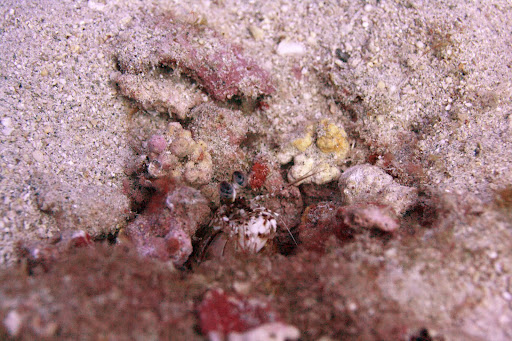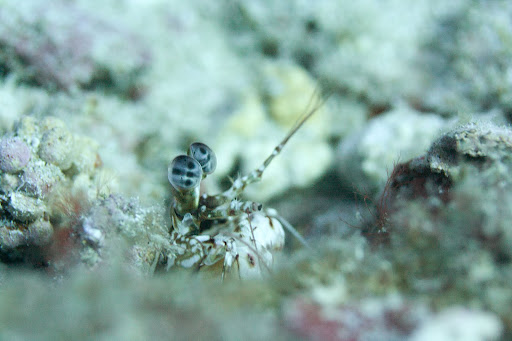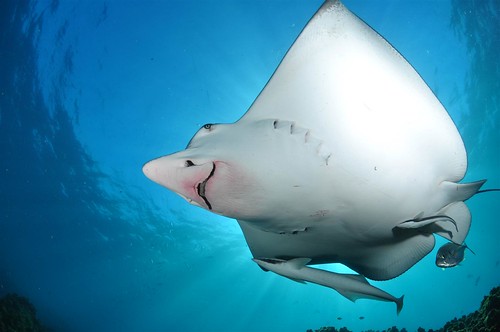There are two good things about P&S camera's over interchangeable lens ones:
1. Depth of field at a given field of view and F stop. The SLR people would tell you they have better control of depth of field, and they would be correct, except that they need to, because they have so much less of it.
2. The second is a bit more obscure. All focal plane camera's maximum flash sync at something between 1/125 to 1/250th (that I know of). I believe the micro four thirds are 1/160th maximum (to lazy to go look, sorry). If you want to cut out ambient light, you just have to increase the F stop. But, depending on the lens, after around F8, the image will degrade. By F16, you still have a nice image, but from an absolute quality point of view (not an internet image) one is now something below a really good P&S. And if you let ambient light in (assuming one is shallow and in clear water), then you are limited to the stop action of that 1/160th (which is not that good for really fast moving thing).
An LX-5 can flash sync up to 1/4000... the new fuji and the Oly will 1/2000. It varies with the canon's but they are at least 1/500th. Truth is, they need that because they don't have large number F stops, and they don't have those because they would make really crappy images. But for fast moving, underwater animals, you can freeze things that cannot be frozen with a SLR.
But you typically only get that with the higher end models...
I am not quite sure what to make of some of this. DSLR cameras have big sensors and P&S cameras have little sensors. Image quality with big sensors is much better than with small sensors. While the DOF of a large sensor (at the same viewing parameters) is smaller than with a P&S there is no lack of DOF with a DSLR that can shoot at F22 compared to my P&S that can only shoot at f8. Besides, the reason that DSLR folks talk about DOF is that they can make the DOF shallow for creative reasons, something that can not be gotten by most P&S cameras.
As for freezing the motion of an underwater fish, the sync speed of the camera to the strobe is totally irrelevant if you do it correctly; only the duration of the flash is important. This is of course not true if the ambient light is so bright that any reasonable shutter speed will lead to overexposure but for most practical situations shooting at 1/250 of a second at f16 will lead to minimal ambient exposure and you can capture the speed of almost anything you want. I personally have never wished for a higher sync speed than 1/250 except in the case of shooting a sunball and wanting to get a black background but trying to do that with a P&S is even more absurd. To me the biggest advantage aside from size of a P&S system is that you can shoot both macro and WA on the same dive. The disadvantage is that the IQ of the images that you will get will not be as good as those gotten with DSLRs. Of course not as good might still be way more than good enough, YMMV.
Bill Dive often and safe









